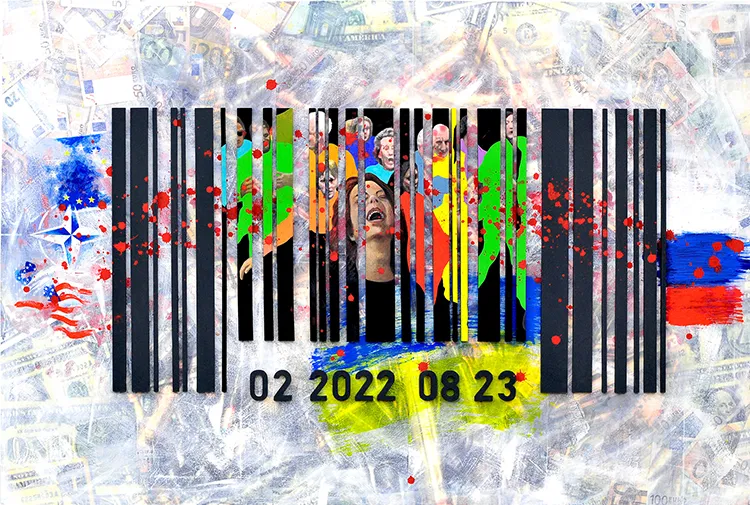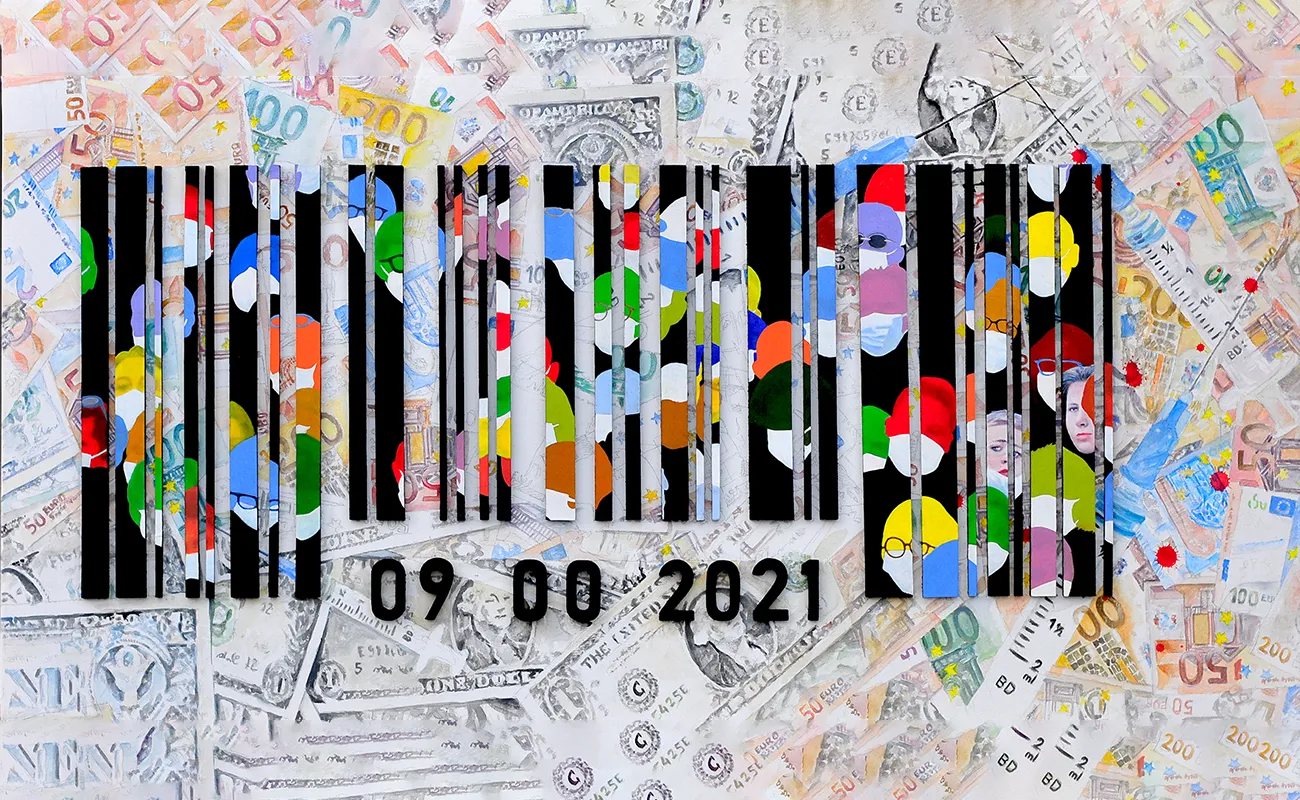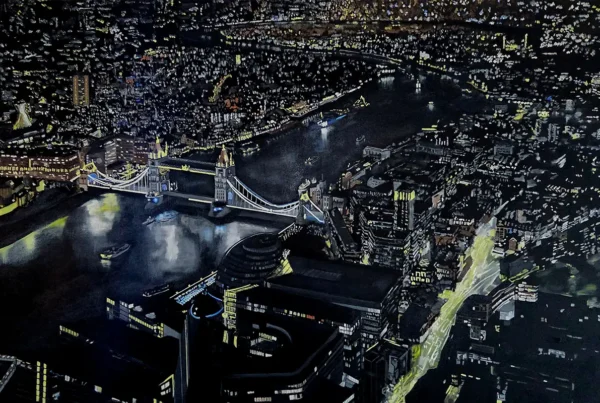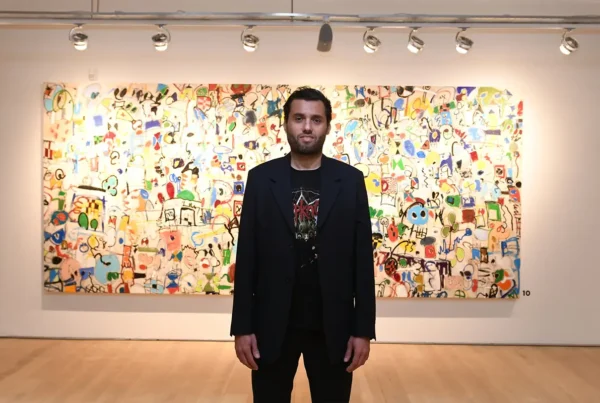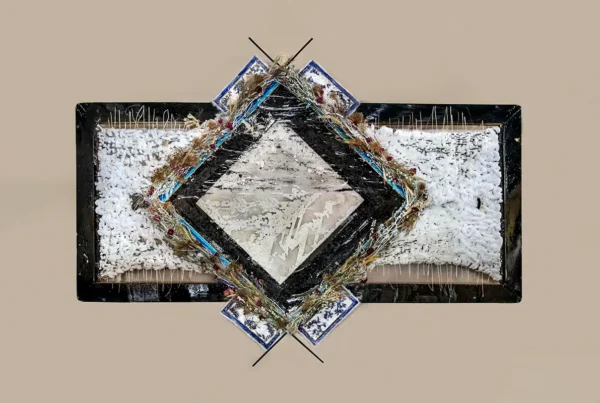“My artistic journey of several decades forms a living foundation that I draw upon freely and expansively.”
Bridging Architecture and Art: A Journey of Transformation
Didier Vacher, known as Didier Valhère, has an artistic journey as multifaceted as the works he creates. Born in Coutras, France, in 1960, Valhère first pursued a career in architecture, dedicating a decade to the field before transitioning into visual arts. His time spent in architecture influenced his approach to art, imparting a structural discipline that can be seen in his precise compositions. After leaving architecture behind, Valhère became a professor of visual arts, intertwining his passion for creation with his livelihood. Parallel to his role as a teacher, he refined his craft and approach in the pursuit of research, allowing him to obtain a Doctorate in Arts and Art Sciences from Paris I – Panthéon-Sorbonne and a habilitation to supervise research from Bordeaux Montaigne. His doctoral thesis, titled “The Flesh Viewer: From the Nude to Porn in Contemporary Art, for an Unlikely but Potential Convergence,” delved into the evolving representations of the human form, while his habilitation thesis, “Is the Painted Portrait Still Relevant Today?” examined the contemporary significance of portraiture in art. Valhère’s artistic journey of several decades constitutes a living foundation from which he draws freely and broadly to deepen an analytical and fragmented narrative figuration.
The pivot from architecture to art marked the beginning of an expansive and evolving career. Valhère’s early experiences in designing theater sets and artistic perspectives in a municipal architecture office that employed him as an architectural collaborator allowed him to diversify his practice of visual storytelling. These foundational experiences, coupled with his exposure to the works of figurative painter Jean-Marie Poumeyrol, helped shape Valhère’s artistic trajectory. His unique blend of technical precision and creative spontaneity has since defined his work, enabling him to develop a style that critiques and analyzes the fragmented nature of contemporary life.
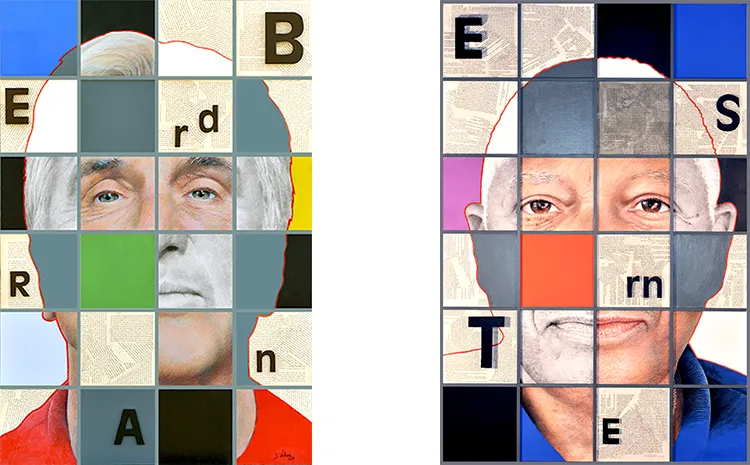
Didier Valhère: The Influence of Figuration and Fragmentation
For Didier Valhère, figuration serves as the cornerstone of his artistic expression. His works, particularly his portraits, are steeped in the interplay between the figurative and the abstract. Inspired by the art of stained glass—an eminently Western production playing on light (intense color and exacerbated graphic compartmentalization highlighting fragmentation)—his portraits often present a fragmented approach, decomposing human faces into squares that evoke the contemporary segmentation of pixelated imagery in the digital age. This method allows Valhère to explore identity not as a fixed entity but as something fluid and fragmented, a concept deeply rooted in his personal and professional experiences. The connection between these pixel-like squares and the broader digitalization of the world speaks to the ways in which modern society reconstructs and manipulates personal identity.
In addition to portraiture, Valhère’s work frequently examines still life, a genre he finds closely related to his analytical approach. For him, a portrait derived from an image becomes a form of still life, as it portrays not the living subject but rather the representation of the subject. This philosophical questioning of the boundaries between the living and the inanimate, the individual and the object, underpins much of his artistic exploration. His portraits and still life pieces are further enriched by the inclusion of text and written language, often incorporating relief letters that offer a richer experience in the presence of the work than in its representation, thus merging the visual and the verbal in a way that prompts viewers to reflect on the interconnection of image, narrative, and meaning.
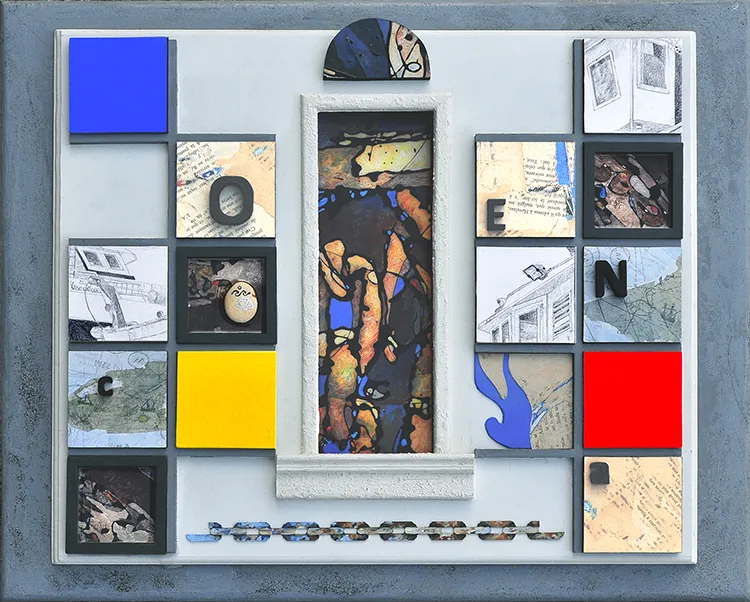
The Role of Found Objects and Mixed Media
Valhère’s practice is not confined to one medium. Over the course of his career, he has embraced an array of techniques, from the pencil and ink of his early works to the mixed media and collage compositions of his later creations. His artistic journey began with line and form, and over time, he has incorporated acrylic, charcoal, and oils into his work. Each medium brings its own unique possibilities, enabling Valhère to layer textures, colors, and meanings in ways that reflect the complexity of modern life.
Central to Valhère’s artistic process is the inclusion of found objects, which he integrates into his works to create rich, layered compositions that blur the boundaries between painting and sculpture. By incorporating text from books, letters, and even physical materials, Valhère builds a sense of historical narrative into his pieces. These assemblages evoke a tactile quality, inviting the viewer to engage not only with the visual but also with the material history embedded in the artwork. His commitment to mixed media has allowed him to create works that are both visually stimulating and intellectually thought-provoking, blending traditional techniques with innovative approaches.
This diversity in media is not only a testament to Valhère’s technical versatility but also a reflection of his broader artistic philosophy. For him, art is a living, evolving practice, one that can be continually revisited, updated, and enriched by new techniques and ideas. His ability to integrate and adapt various mediums speaks to his belief that art should remain open and flexible, capable of accommodating new forms of expression without losing its connection to tradition.
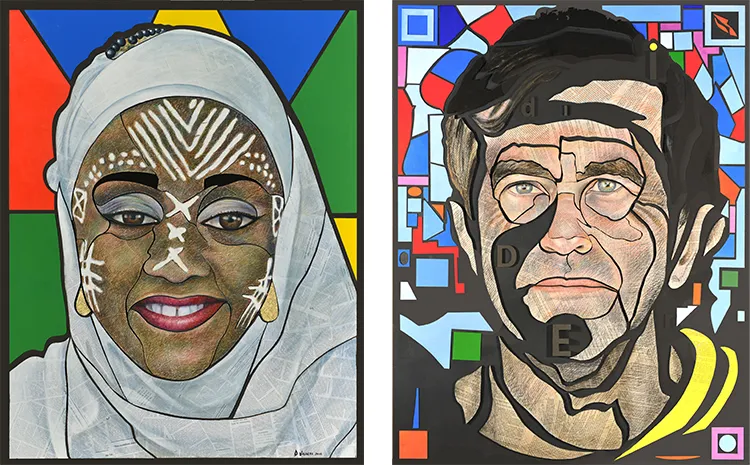
Didier Valhère: Critique, Commodification, and Art Resilience
Valhère’s work often grapples with the socio-political challenges of contemporary society, particularly issues surrounding commodification, identity, and the intersection of art and consumer culture. His use of barcodes as a recurring motif symbolizes the commodification of human experience, confining faces or symbols within the rigid structure of capitalist consumption. These relief barcodes that stand out on a chaotic background of banknotes, financial corporate logos, and fragmented symbols reflect his critique of how global capitalism shapes personal and collective narratives. Valhère’s commentary on commodification extends beyond the visual; it touches on deeper questions of autonomy, identity, and the role of the individual in a consumer-driven society.
As an artist, Valhère has not shied away from addressing the challenges that contemporary art faces in a world increasingly dominated by conceptualism and technological advancements. He is particularly critical of the way France, his home country, tends to devalue figurative work in favor of more conceptual forms of art. In response to these trends, Valhère joins the international movement “Art Resilience,” which advocates a return to artistic mastery and the value of technique and time in the creative process while reappropriating modern and contemporary experiences that continue to make sense. Through this movement, Valhère has continued to explore and promote an artistic vision that places equal importance on technical skill and conceptual depth.
Valhère’s artistic future lies in his ambition to expand his work beyond France and onto the international stage. His focus remains on finding collaborators and patrons who can help elevate his practice and introduce his work to a wider audience. With his rich academic background, commitment to craft, and critical engagement with contemporary issues, Didier Valhère is poised to make an even greater impact on the global art scene, continuing to challenge perceptions of identity, commodification, and the evolving role of art in society.
